Small Bathroom Remodel: Transform Your Compact Space Into a Stylish Sanctuary
Table of Contents
A small bathroom remodel can completely transform one of the most important rooms in your home. Whether you’re dealing with a small bathroom or a cramped full bath, the right design strategies can make your space feel more spacious, more functional, and surprisingly luxurious. In fact, studies show that bathroom renovations have the highest return on investment among home improvements, with the average ROI for small bathroom renovations being 67%.
The challenge in small bathrooms isn’t just putting everything in its place; it’s creating a space that feels open, organized, and enjoyable to use. With smart planning and creative solutions, even the smallest bathroom can become a personal sanctuary that rivals larger spaces in style and function.
Understanding Design Options for Small Bathroom Remodel
Making the Most of Every Square Foot
When planning your small bathroom remodel, design becomes the foundation of your success. The key lies in understanding how different configurations impact both function and perception of space.
The Three-Point Triangle Rule remains the benchmark for bathroom design. The toilet, sink, and shower/bathtub should form an efficient triangle that minimizes wasted steps. In small spaces, this becomes even more important.
Popular small bathroom designs include:
- Linear Design: All fixtures along one wall, ideal for tight spaces
- L-Shaped Design: Maximizes the use of corners while maintaining flow
- Gallery Style: Two parallel walls with fixtures, ideal for long and narrow rooms
Effective Corner Solutions
Don’t underestimate the power of corners in your small bathroom remodel. Corner sinks, toilets, and even small corner showers can free up valuable floor space while maintaining full functionality. Modern corner fixtures are specifically designed for small spaces and can actually become attractive points of interest rather than mere compromises.
The Power of Pocket Doors
Traditional swing doors can consume up to 9 square feet of floor space. Pocket doors, barn doors, or bi-folding options reclaim this precious space, making your small bathroom appear noticeably more spacious.
Smart Storage Solutions That Optimize Small Spaces
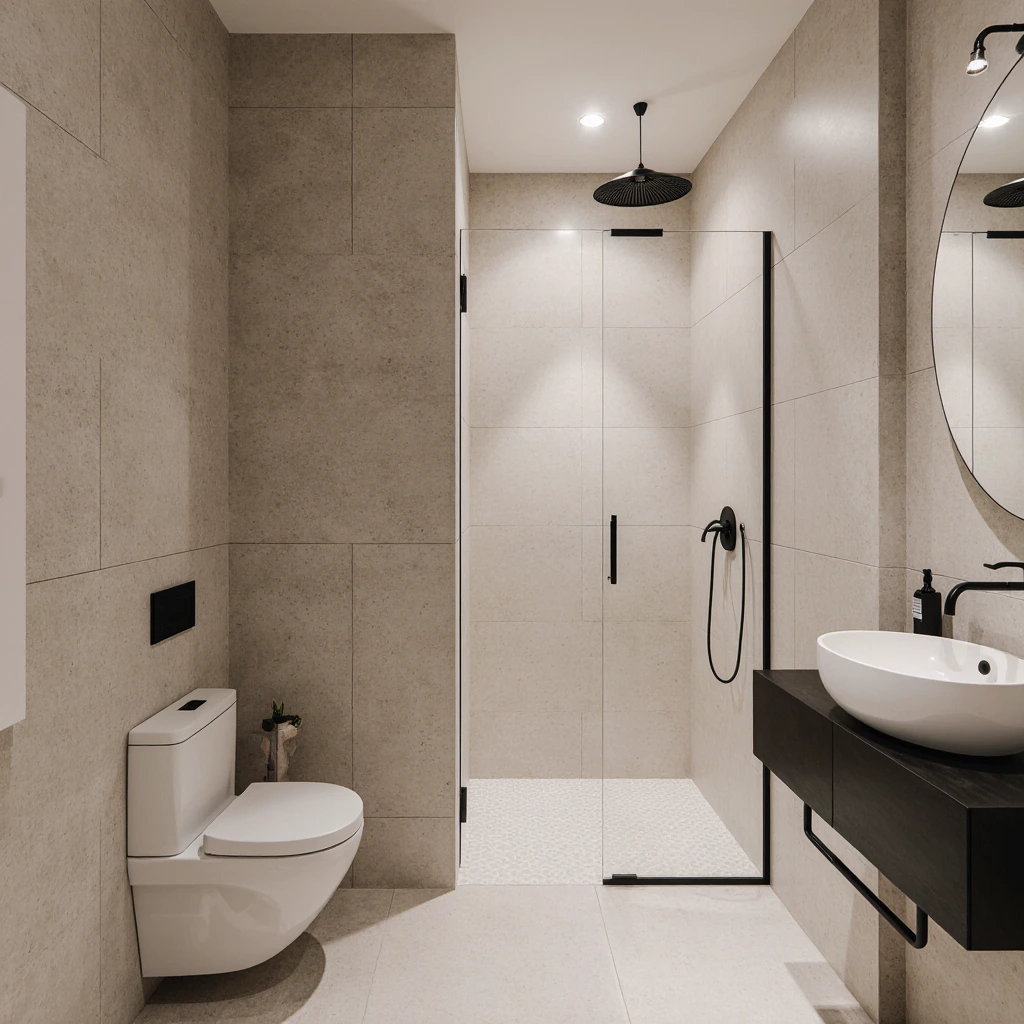
Vertical Storage Strategies
In small bathroom renovations, vertical thinking is essential. Your walls are precious space that often goes unused.
Wall-Mount Everything: Install your vanity, your toilet (yes, wall-hung toilets are revolutionizing the bathroom), and install floating shelves. This creates clean lines and makes your floor appear larger.
Built-In Storage: Built-in medicine cabinets, shower niches, and built-in toilet paper holders don’t stand out in your space. They provide storage space while keeping your wall lines clean.
Hidden Storage Opportunities
Find unexpected storage opportunities during your small bathroom renovation:
- Under-stairs storage if your bathroom is located under the stairs
- Storage behind mirrors with full-length mirror cabinets
- Easy-to-use drawers under the vanity for flat items
- Over-the-toilet cabinets that don’t obstruct the toilet’s function
Versatile Furniture
Every piece in a small bathroom should have its place. Consider vanities with built-in laundry baskets, mirrors with built-in lighting and storage, or shower shelves that double as decorative elements.
Materials and Finishes: Durability and Elegance
Color Psychology in Small Spaces
Color choices in your small bathroom renovation can greatly impact the feeling of spaciousness. Light and neutral colors reflect light and create a sense of more space, but don’t limit yourself to stark white.
Monochromatic Designs Using different shades of the same color creates visual depth without being overwhelming. Try soft grays, warm beiges, or even muted blues to create a sense of consistency and spaciousness.
The 60-30-10 rule works great for small bathrooms: 60% of a dominant neutral color, 30% of a secondary color, and 10% of a statement color that adds personality.
Tile Strategies That Expand Space
Your choice of tile can make or break the visual impact of your small bathroom renovation.
Large-Size Tiles: Contrary to popular belief, larger tiles (12 x 12 inches or larger) minimize grout lines, making spaces appear larger and more uniform.
Vertical Patterns: Tiles that extend vertically draw the eye upward, creating the illusion of height.
Continuous Flooring: Using the same tile on the floors and extending it partially up the walls creates visual continuity that expands the perceived space.
The Magic of Mirrors
Mirrors are your secret weapon in small bathroom renovations. A large mirror doubles your bathroom space. Consider:
- Full-wall mirrors for a perfect effect
- Mirrored backsplashes to reflect light
- Multiple mirrors at different heights to suit different users
Lighting and Ventilation: Creating a Comfortable Atmosphere
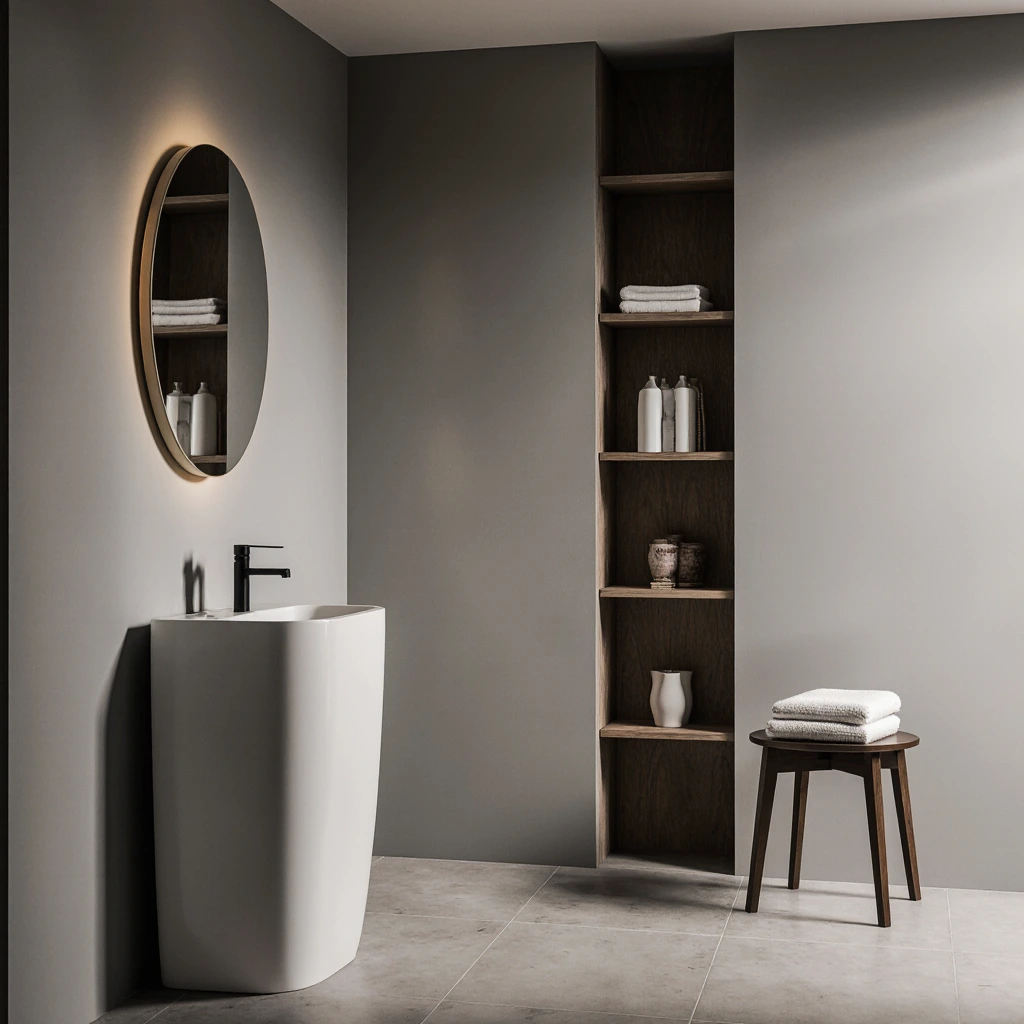
Multi-Layered Lighting Style
Proper lighting makes your small bathroom appear more spacious and luxurious when renovated. Implement a three-layered lighting strategy:
Ambient Lighting: All-around illumination of the room with recessed ceiling lights or a central lighting unit.
Custom Lighting: Focused lighting around the mirror for personal care.
Accent Lighting: Decorative elements such as LED strip lighting under hanging vanities or behind mirrors.
Maximize Natural Light
If you have windows, make the most of them:
- Replace solid window blinds with frosted glass or light-filtering options.
- Install skylights if possible to provide natural overhead lighting.
- Use light tubes to bring natural light into ensuite bathrooms.
Ventilation Basics
Good ventilation prevents moisture damage and maintains air quality. In small spaces, this becomes even more important:
- Choose the right size exhaust fan: The fan should operate at a rate of at least one cubic foot per minute per square foot of bathroom space.
- Consider compact units that provide lighting and ventilation in a single unit.
- Install humidity sensors for automatic operation.
Common Small Bathroom Design Mistakes and Solutions
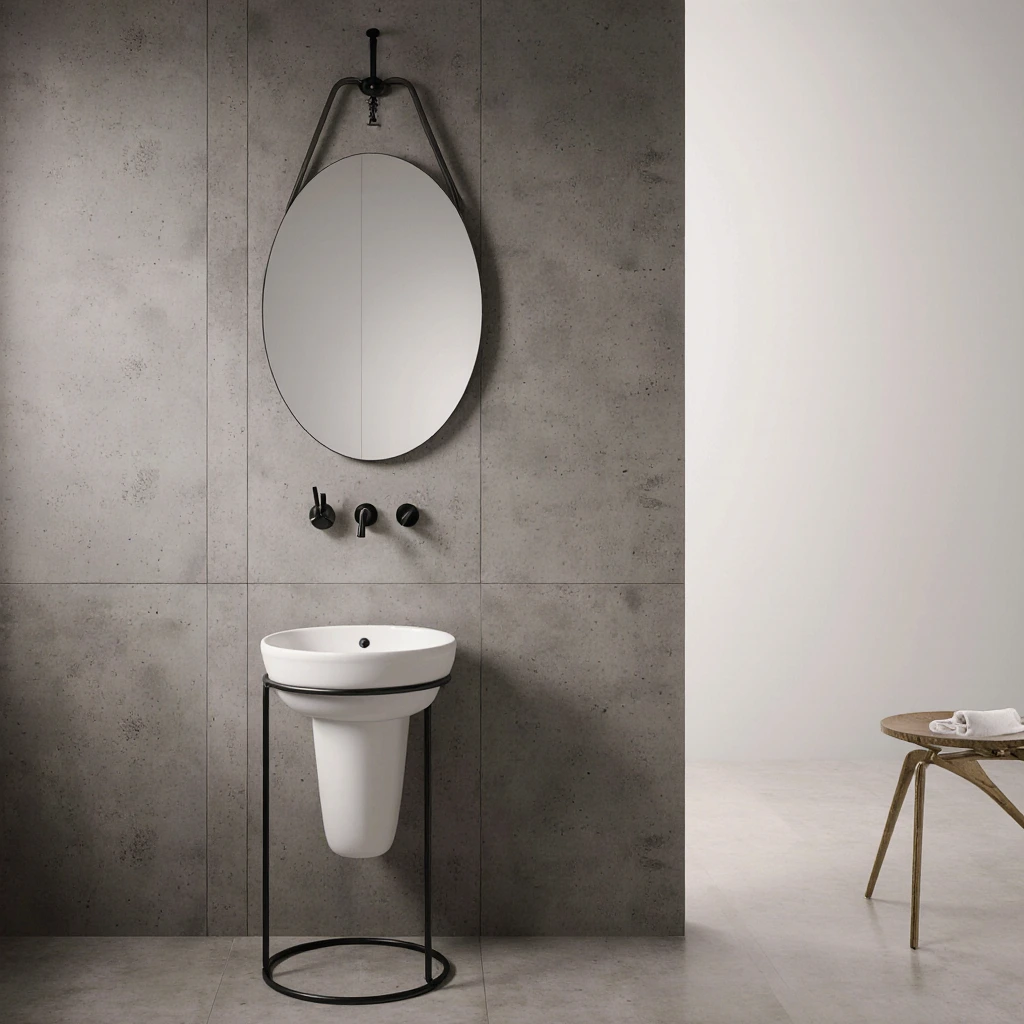
Mistake 1: Overcrowding the fixtures
Problem: Trying to fit everything you want without regard for proportion.
Solution: Prioritize your essentials and choose fixtures that are the right size. A pedestal bathtub may be better than a large vanity if the space is extremely tight.
Mistake 2: Ignoring the ceiling
Problem: Focusing solely on floor space and ignoring vertical opportunities.
Solution: Paint the ceilings light colors, add crown molding, or install ceiling-mounted storage units to draw the eye upward.
Mistake 3: Poor Lighting Planning
Problem: Relying on a single overhead light source creates shadows and makes the space feel cramped.
Solution: Use layered lighting with multiple sources at different levels.
Mistake 4: Choosing the Wrong Storage Unit
Problem: Bulky floor-standing storage units take up valuable floor space.
Solution: Invest in built-in, wall-mounted, or concealed storage solutions.
Budgeting Your Small Bathroom Renovation
Cost-Effective Strategies
Small bathroom renovations can cost anywhere from $5,000 for a simple remodel to $25,000 or more for a luxury remodel. Smart strategies to make the most of your budget include:
Prioritize High-Impact Changes: Focus on elements that make the biggest visual difference—tile, fixtures, and lighting often offer the best value for your money.
DIY WHAT YOU CAN: Painting, installing accessories, and simple tile work can be home projects that save a lot of labor costs.
Keep the plumbing in place: Moving plumbing fixtures can significantly increase costs. Work within your existing home design as much as possible.
When to splurge or save?
Splurge: High-quality fixtures used daily (faucets, shower heads), professional tile installation, and good ventilation.
SAVE: Decorative accessories, basic vanities that you can upgrade later, and paint (choose high-quality paint but do it yourself).
Renovating Your Small Bathroom for a Satisfying Future
Principles of Inclusive Design
Even in small spaces, consider accessibility features that add long-term value:
- Curtainless Showers are stylish and accommodate mobility needs
- Grabs that double as towel bars or decorative elements
- Comfort-height toilets that are easy to use for all ages
Integrate Technology
Modern small bathroom renovations can benefit from smart technology:
- Smart Mirrors with built-in lighting and information displays
- Heated Floors that offer luxury without taking up space
- Motion-Sensing Faucets and Lighting for comfort and water conservation
Develop a Work Plan
The success of your small bathroom renovation depends on careful planning and execution. Start by accurately measuring your space and developing a realistic timeline. Most small bathroom renovations take two to four weeks, depending on the complexity.
Consider hiring professionals for plumbing and electrical work, even if you’re installing other elements yourself. Investing in proper installation pays off in terms of performance and safety.
Remember, the best small bathroom renovation is one that reflects your personal style while making the most of every square inch of space. Take the time to research, plan carefully, and don’t rush into a decision.
Are you ready to transform your small bathroom into a space you’ll love? Start by measuring your space and identifying key features. With the right approach, a small bathroom renovation can yield dramatic results that improve your daily routine and the value of your home.
What’s the biggest challenge you face in your current bathroom? Share your thoughts in the comments below, and don’t forget to subscribe for more home improvement tips and inspiration!
Best Amazon Picks :
FAQs
How much does a typical small bathroom renovation cost?
A small bathroom renovation typically costs between $8,000 and $15,000 for mid-range renovations. Basic renovations can cost between $3,000 and $6,000, while luxury small bathroom renovations can cost between $20,000 and $30,000. Factors affecting cost include the quality of fixtures, tile selection, plumbing changes, and labor costs in your area.
What is the best layout for a 5 x 8-foot bathroom?
For 5 x 8-foot bathrooms, a linear layout is often best, placing the toilet at one end, the sink in the middle, and the shower/tub at the other. This maximizes floor space and improves flow. Consider installing a corner sink if you need more space, and always choose a pocket door or a small door to save space in the bathroom.
How can I make my small bathroom look bigger without a major renovation?
Simple changes can significantly impact the perception of space: painting the walls and ceiling in light colors, installing a large mirror, updating LED lighting, removing clutter from countertops, and replacing the shower curtain with a clear glass door. These changes can make your bathroom appear 30-50% larger without requiring major construction work.
Should I choose a shower or a bathtub for my small bathroom renovation?
In most small bathrooms, a shower design only improves space and functionality. However, if you have young children or prefer bathtubs, consider a combined bathtub and shower or a Japanese-style bathtub that is shorter but deeper than traditional bathtubs.
What is the biggest mistake people make when renovating small bathrooms?
The most common mistake is trying to fit too much into the space. Instead of cramming every desired feature, focus on your essential needs and choose appropriately sized fixtures. It’s better to choose a smaller, carefully selected set of items that perform their function perfectly rather than cluttering the space.
How long does a small bathroom renovation typically take?
Most small bathroom renovations take two to four weeks, depending on their complexity. Simple updates (paint, fixtures, and vanity) may take one to two weeks, while extensive renovations, including tile work and plumbing changes, may take three to five weeks. Always be mindful of unforeseen problems and material delays.
Can I renovate a small bathroom myself?
Many aspects of a small bathroom renovation can be done by yourself, including painting, fitting accessories, basic tile work, and replacing a vanity. However, always use licensed technicians for electrical work, major plumbing changes, and structural modifications. This ensures safety and code compliance, while also saving money on simple tasks.

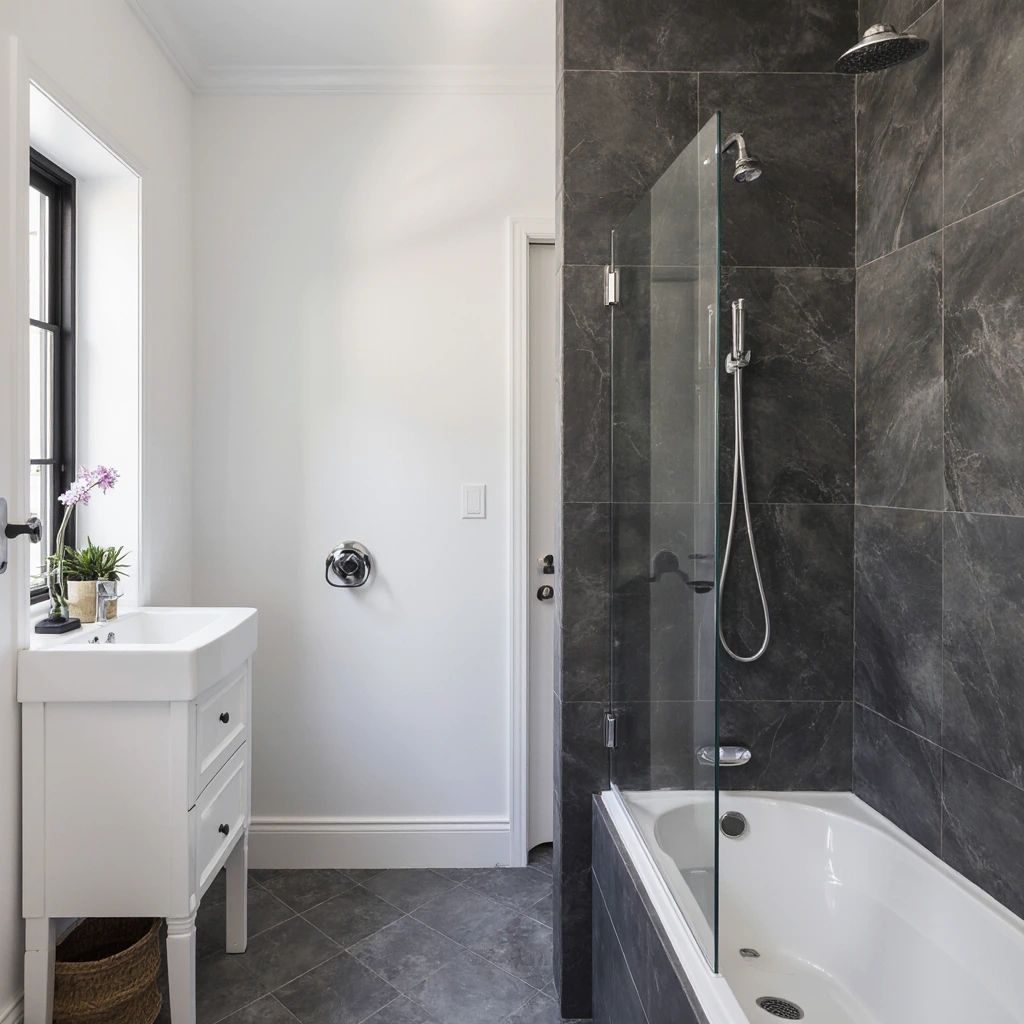
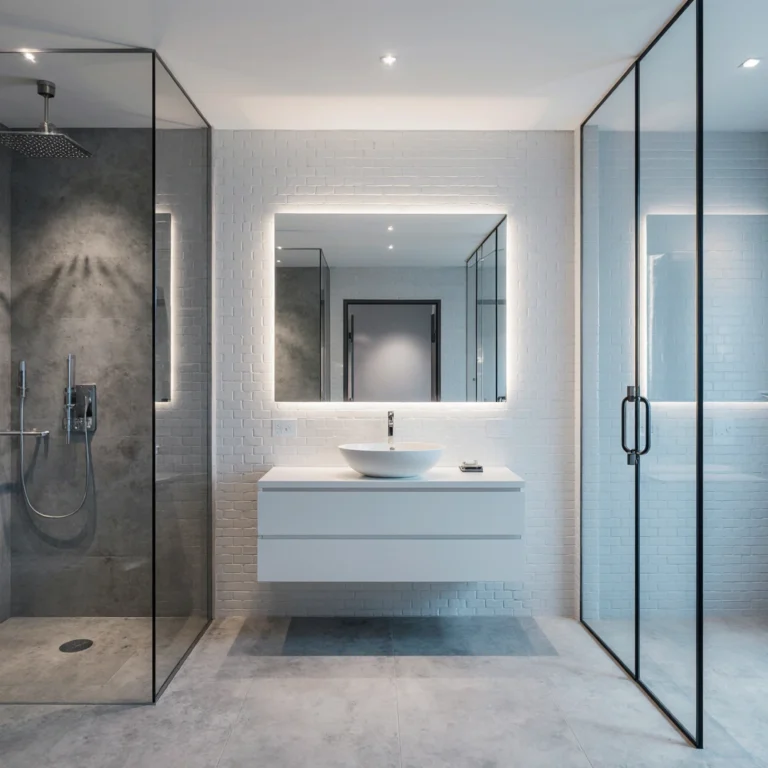

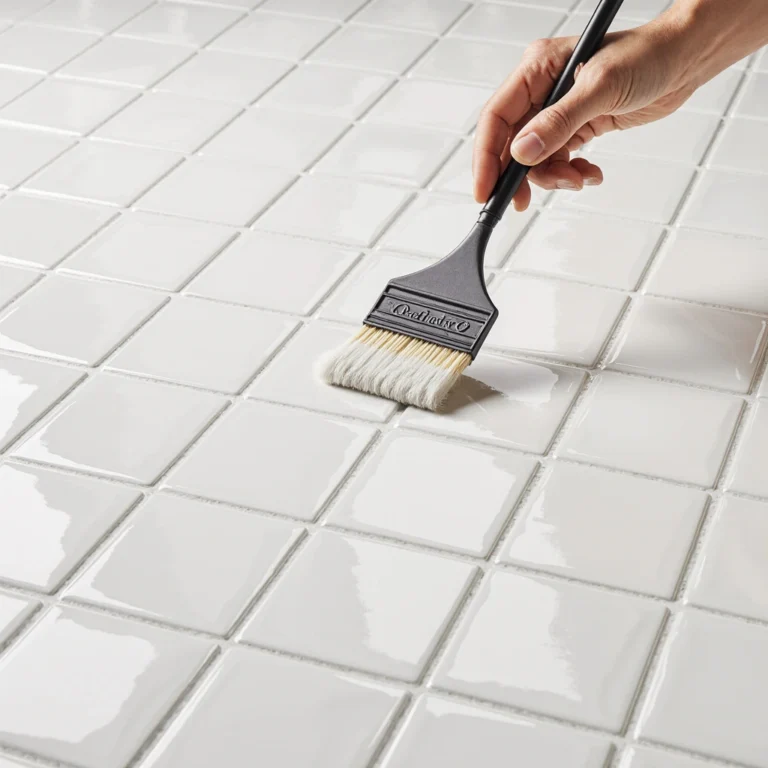
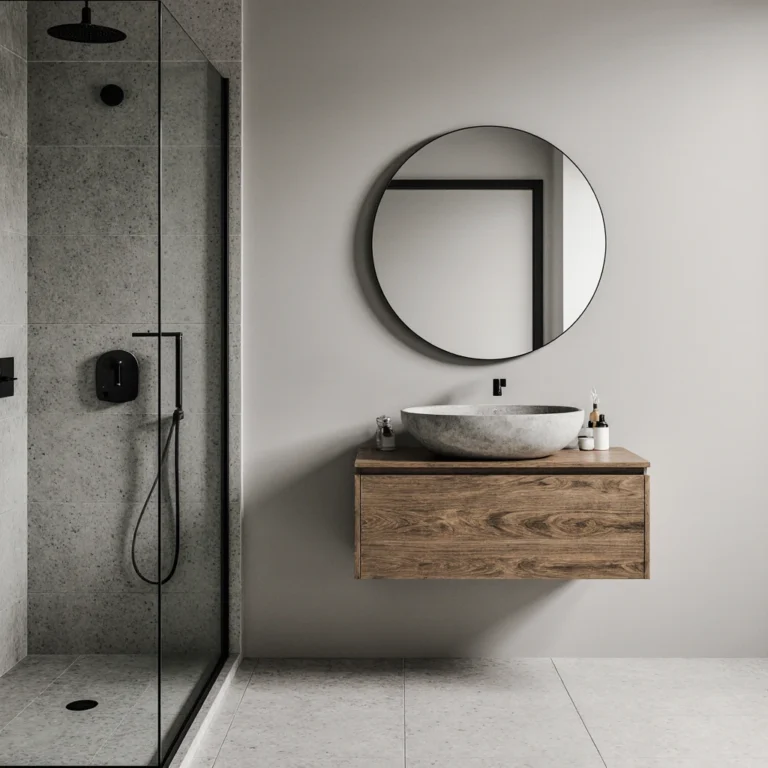
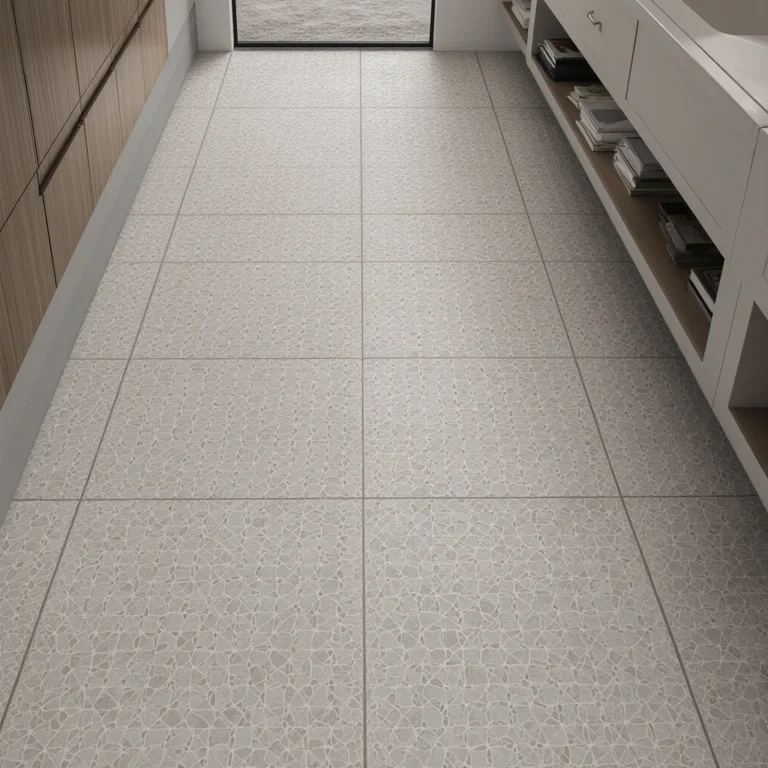
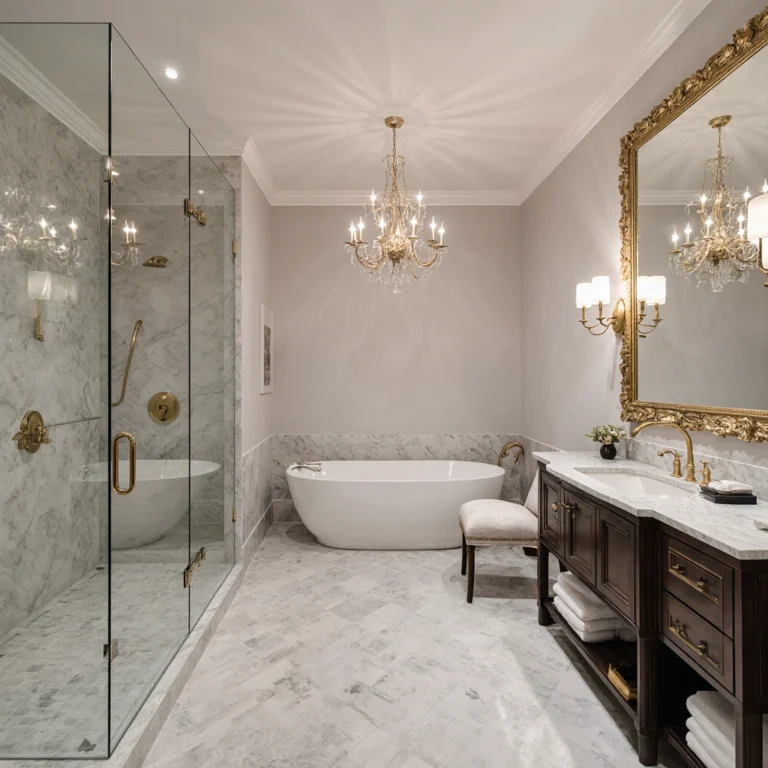
2 Comments
Comments are closed.